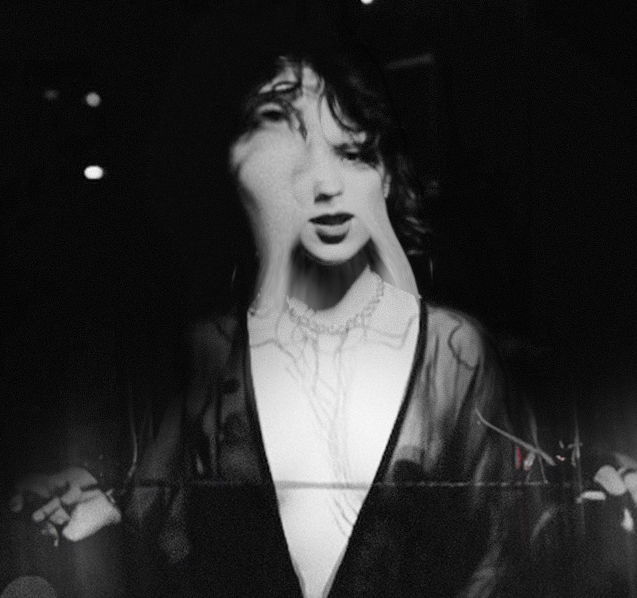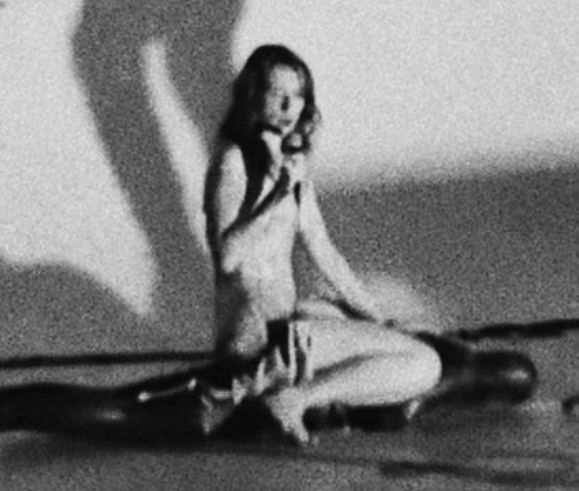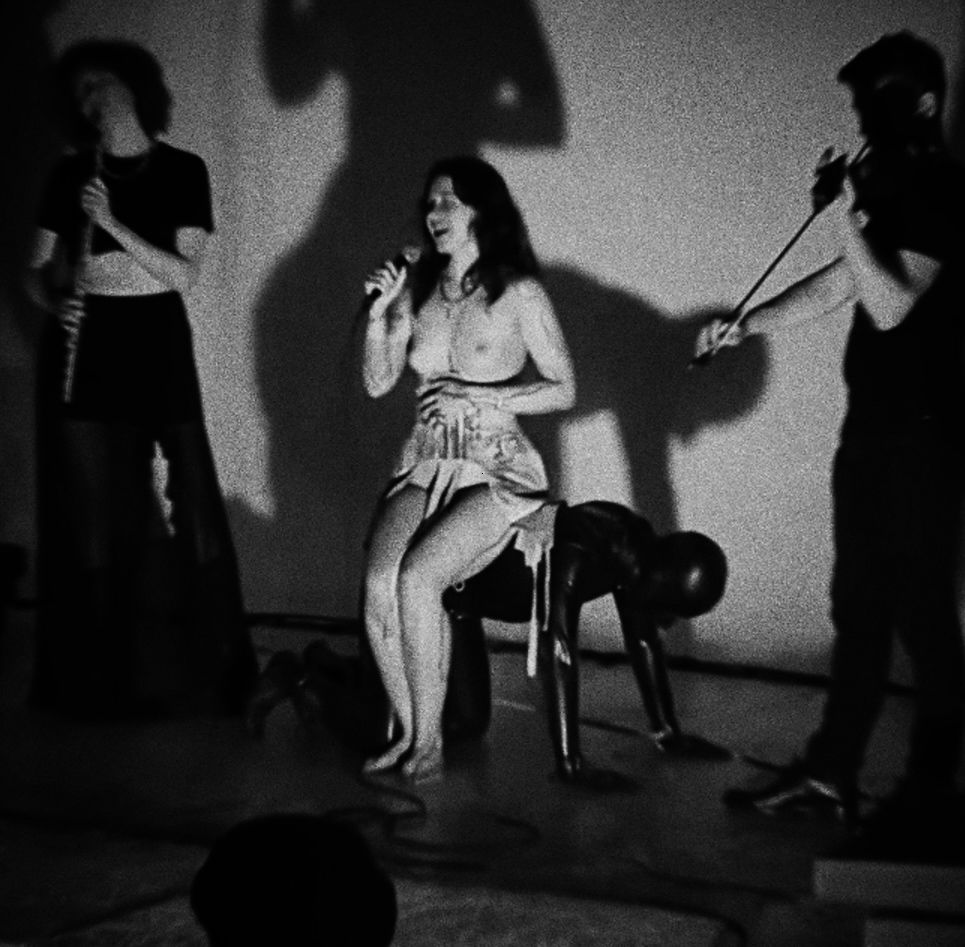“I love my horse!”London / Wake Up 2 Performance Documentation

This performance explores bodily exploitation, structural burden, and feminist agency through a live architecture of bodies, sound, and symbolic reversal.

At the center is a sub in full-body Total Latex. His role shifts — first he is a chair, a piece of furniture, then a horse. This transformation moves from passive function to loaded endurance. Eventually, the body collapses. It can no longer serve. This is the moment that matters. The function fails. The system breaks under its own weight.
I appear on stage wearing a corset, without underwear. Before entering, I apply lipstick to my labia, leaving traces on my thighs as I sway. These marks function as silent but visual gestures that restore the possibility of speech to a body denied official verbal status.
On stage are two academic musicians, violin and flute. They are deeply embedded in the European canon and its bodily-disciplinary heritage. The flute represents sound without body, breath as abstraction. The violin conveys refined, formalized affect. I’m deeply grateful to have found musicians willing to refract their discipline through the lens of performance art. We were, in many ways, in a counter-position — and from that tension emerged a shared sense of post-crisis structure. Without question, this was an act of love and tenderness toward the discipline itself, beautifully poisoned (in the best sense) by a love for instability, for the unpredictable nature of honest, live expression. It means a lot to me to work with classically trained musicians who are open to stepping beyond the frame. Me moves from ritualistic invocations to perverse baroque gestures and ends in a strained, broken lullaby with gods’ names mentioned. I intentionally fracture the vocal line, shifting from the sacred to the grotesque, from power to vulnerability. At moments there is ironical baroque laughter.

Research: On Power, Forgiveness, and Creative Aggression
I’m drawn to experiencing what others are condemned for. What proves most difficult, beyond our collective trauma, is not pain but the ease of dehumanization. The ease with which one being judges and uses another, entirely equal in its shadow-nature.
Within the performance I consciously take on the role of the exploiter. I enact various stages of tyranny and simultaneously observe myself justifying them. I play with sadism in a cold register and at the same time search for a way to forgive the game itself.
I believe the root of aggression lies in every genuine act of creation. We are, in a sense, carnivorous, whether we create with our own instruments or through the fall of others. Through bodies, voices, and concepts, we consume, digest, and rearticulate. Forgiveness is a non existent function. Love may perhaps claim the role of a structure even more sadistic than sadism itself.
Themes and Contexts Critique of institutionalized power including musical and aesthetic authority Feminist ethics, the right to weight, volume, destruction The body as limit of function, being the reason of this limit. Feminine articulation and the metaphor of voice.
Commissioned Performance works https://www.gertot.com/shop/site-specific-live-art-sessions